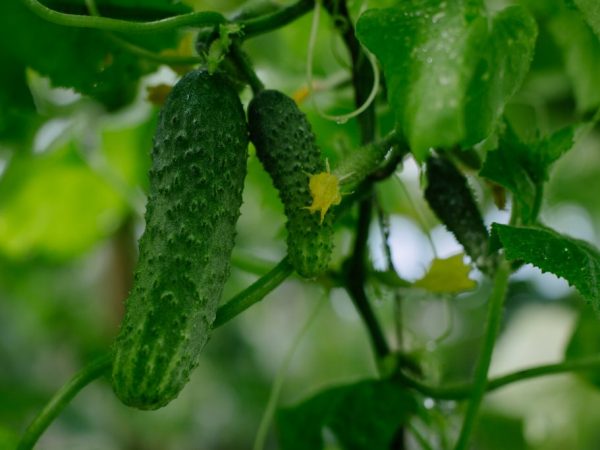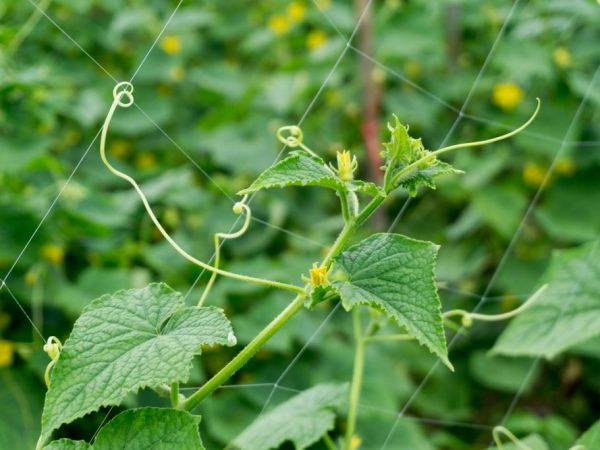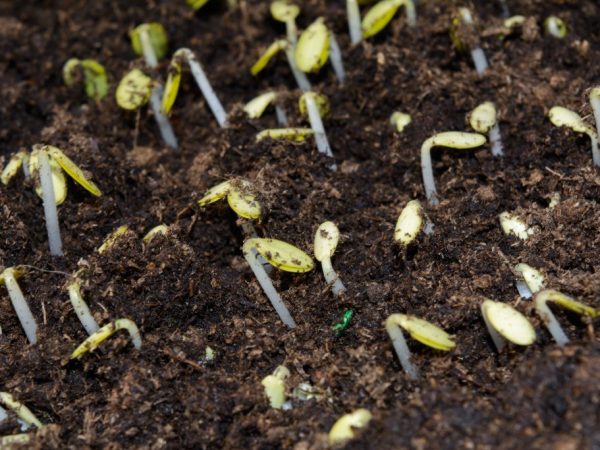Description of the variety of cucumbers Herman
Practically every person who has his own land is engaged in the cultivation of cucumbers. Despite the fact that this garden culture cannot be called unpretentious, it is easy to care for. And by choosing the right variety, it will be possible to simplify the process of growing cucumbers as much as possible. Today we will talk about the Herman cucumber variety, which is popular among summer residents.

Description of the variety of cucumbers Herman
Variety characteristic
Cucumber Herman is an F1 hybrid native to Holland. Its growing season is 36-42 days. Accordingly, the variety of cucumbers Herman f1 belongs to the early maturing. The ovaries are bunches of 7-9 cucumbers. Cucumber Herman f1 is self-pollinated, which makes it easy to care for. It also allows this hybrid variety to be grown in greenhouses.
As for the yield, from one square meter you can get 15-25 kg of gherkin-type cucumbers. They are covered with a dark green skin, white-yellow stripes are present at the base, light green flesh is medium-dense. All cucumbers are almost the same size. Their length is 12 cm, weight 75-90 g, diameter - 3 cm. The fruits have a delicate taste, there is no bitterness. The height of the bush is 4-5 m.
Dignity
After opening the package, you can see the seeds covered with a film. This film is formed as a result of pelleting with thiram. Through this procedure, they achieve high germination rates (at least 95%) and increase yields. Accordingly, it is not necessary to plant a large number of seeds and, after the emergence of seedlings, thin out the bed. This simplifies the maintenance of the beds.
Cucumbers Herman f1 are resistant to the following diseases:
- mosaic;
- cladospornosis;
- powdery mildew.
Cucumbers of the Herman f1 variety are unpretentious to soils and climatic conditions. The main thing is that the soil is fertile. And this problem is solved through the application of fertilizers. This versatility makes it possible to grow the variety in all regions of the country.
The high yield allows the cultivar of hybrid cucumbers German f1 to be grown on an industrial scale. All analogues of this variety that exist today (Courage, for example) are less productive. Almost the entire crop has an excellent presentation, which is not lost during transportation. The presence of powerful shoots that do not break off under the weight of the fruit should also be attributed to the merits.
If you find that the seeds are not opened by the shell, then it is a fake. Such seedlings will not give a good harvest. Therefore, it makes no sense to waste time planting and caring for such plants.
disadvantages

With good care, you can harvest a lot
Herman f1 cucumber seeds are expensive. And you cannot collect seed on your own. This is due to the fact that hybrids have high yield characteristics only in the first generation. For all subsequent generations, the yield falls. In addition, plants of 2, 3, etc. generations are not resistant to diseases.
Herman f1 cucumbers do not always respond well to replanting.Therefore, it is better to plant them immediately in open ground. If seedlings are pre-grown, then during transplantation, the plant is placed in prepared holes with a root ball of earth.
Growing up is complicated by the fact that it is demanding on the temperature regime. Young plants and seeds die in the soil, the temperature of which does not exceed 8 degrees. The plant does not tolerate frost. In regions with a long spring, it is better to grow this hybrid in a greenhouse or under a temporary cover, which can be removed in summer.
Cucumbers are unstable to rust. Plants are also affected by parasites. Therefore, the plants will have to be processed throughout the entire growing period. Before flowering, insecticides are used. After the flowers appear, we give preference to folk methods of dealing with aphids, ticks and rootworm nematodes.
Due to the disadvantages described above, it cannot be said that Herman is the best variety. But, if you create suitable conditions for him, you will be able to collect good harvests of delicious cucumbers, suitable for fresh consumption and canning.
It should be noted right away that Uncle Herman and Herman are different varieties. The first is an improved version of Herman f1.
Landing
Planting includes two stages: seed preparation and sowing in the ground.
Preparation of planting material
To get a good harvest, you need to properly prepare the seed for planting. Presowing preparation involves heating the seeds, which is carried out at a temperature of 60 degrees. Warm-up time - 2-3 hours.
Then, you can disinfect the seeds with special means. But at this stage, the farmers have disputes. Since hybrid seeds are pretreated, many believe that decontamination is not a good idea before sowing. The maximum that needs to be done is to process the planting material with a growth stimulator.
Some summer residents, despite the recommendations of experts, collect seeds from hybrid varieties of cucumbers. They must be disinfected before planting. For this they use the preparations NIUIF-2, TMTD, etc. You can carry out the treatment with a weak solution of potassium permanganate. Properly prepared seeds sprout in 5-6 days.
Only certified goods should be planted, which is better to buy in a specialized store. Good planting material is offered by the companies Gavrish and Aelita. Make sure to expire at least November-December 2018.
Sowing seeds in the ground

Seedlings need to be carefully transplanted
You can plant seeds in open ground, or you can grow seedlings first. Based on the description of the variety, Herman cucumbers are best grown in seedlings. Each seed must be planted in a separate container. Due to the fragility of seedlings from separate containers, it will be easier to transplant them into open ground than from a common container. We sow seeds in a mixture intended for growing vegetables. Experts recommend sowing seeds in early or mid-May.
It is very important to choose the right site for planting seedlings. Cucumbers need partial shade. You can plant them in areas that are in the shade of tall trees or along a fence. Before planting seedlings in the ground, we fertilize it with wood ash. According to the planting scheme, the bushes should be at a distance of 15-30 cm from each other. As for the row spacing, it should be 65-75 cm.If the seeds are planted in open ground, then the planting depth should be no more than 2 cm.
Plants are transplanted 25-28 days after sowing seeds in pots. Experts recommend planting seedlings in the ground not earlier than the beginning of June. By this time, the soil warms up to the desired temperature. In addition, this variety requires an air temperature exceeding 17 degrees. And on May nights, the air temperature can drop to 10-15 degrees.
When planting a bush, make sure that it is sufficiently loaded into the ground.We deepen it down to the first leaves.
Care
Agricultural technology for vegetable crops is simple. It includes watering, fertilizing, preventive treatment, shaping, tying and hilling bushes.
- Watering. Growing a bush without proper watering will not work. Since this variety is thermophilic, it must be watered with warm water. We carry out watering as needed. We do this in the evening. In the absence of rain, watering is carried out every 2-3 days. The next day, after watering, we loosen the soil.
- We huddle the bushes after the third leaf appears. We perform this procedure carefully so as not to injure delicate bushes.
- Top dressing. We fertilize the plant throughout the entire growing period. The plant reacts well to slurry and chicken droppings. We also produce foliar dressing with complex mineral fertilizers.
- Preventive treatment. To grow a healthy bush, it must be treated against rust, to which this hybrid is unstable. We process before the plant blooms. It is also advisable to treat the bushes from parasites. Aphids can be fought with folk methods by planting calendula or other flowers with a pungent smell around the perimeter of the garden bed, which scares off parasitic insects.
- Garter. Be sure to make a garter of the bushes. We use materials at hand for this. Twine, twine, thick line, etc. are best suited. Every 8-9 days we wrap the stem around the support.
Additionally, you can mulch the soil. This procedure helps to retain moisture in the soil. Mulching also eliminates the need for loosening after watering. And this simplifies the care of the vegetable crop. It is best to mulch the soil with sawdust.
Bush formation
Experts recommend forming a bush into one stem. This method allows you to get a good harvest even in regions with short summers.
We are engaged in the formation of a bush from the first days after planting it in the ground. At the bottom of the plant, remove all the leaves with a sharp garden tool. It is not recommended to break them off with your hands. Through the resulting lacerations, infection can enter the plant. Together with the lower leaves, we also remove the lateral shoots, which are formed at the bottom of the stem. Removing shoots is called pinching. The procedure is performed when the shoots reach a length of 4 cm. Late pinching damages the plant.
After the fifth leaf has appeared, the side shoots are not completely removed. Pinching is carried out at a distance of 18-20 cm from the stem. Starting from the eighth leaf, the shoots are cut at a distance of 33-35 cm from the stem.
If you form a bush into several stems, then you need to pinch the central shoot at a certain distance. This distance is regulated by the bush's upper fulcrum. How many stems to leave is up to you. Experts recommend leaving no more than 3 shoots.


